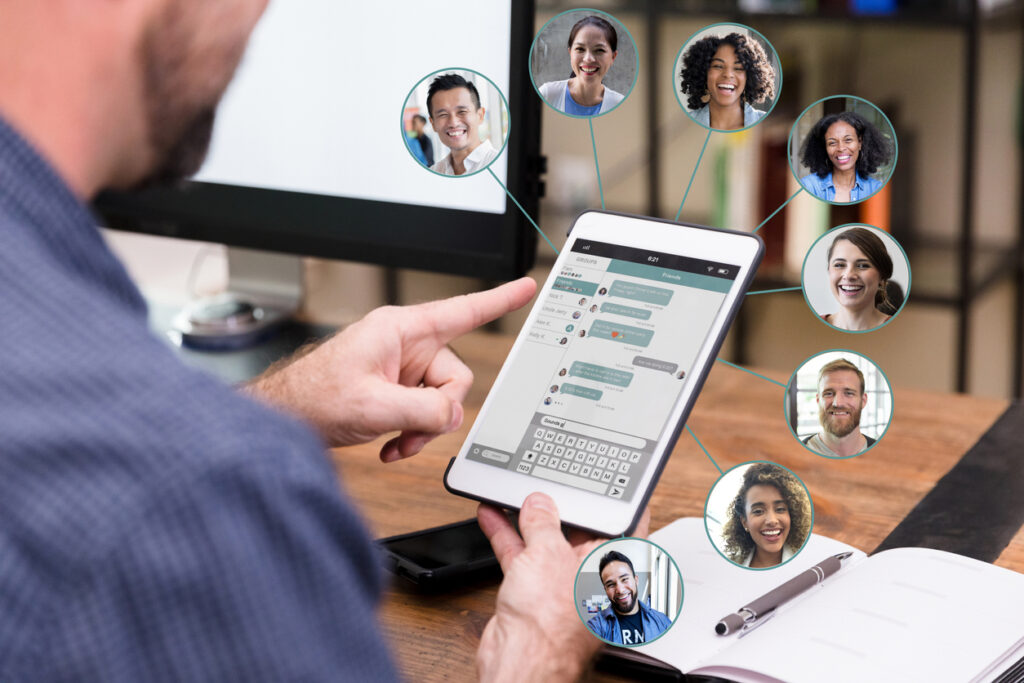As HR practitioners, we know that the unspoken psychological contract that we have with our employees is often more important than the physical employment contract. The fulfillment of this psychological contract has a positive and direct impact on employee engagement, hence the growing emphasis in recent decades on employee engagement strategies.
If the desire of the employee base is largely to remain remote working or to follow a hybrid model, HR needs to research and implement engagement strategies, tools and activities that work rather better than those many have deployed to date.
Until recently, organisations have designed engagement strategies to work mostly in the physical office workplace. With the pivot to mass remote working caused by the Covid-19 pandemic, many organisations’ employee engagement strategies have not transferred well.
Long term home working
According to an international survey conducted by Gartner Inc., 88% of organisations have encouraged or required employees to work from home due to Coronavirus. While many organisations are planning for a return to office-based working in some shape or form soon, HR is seeing a large number of requests from employees who want to continue remote working for the longer-term.
A survey from Hays found 51% of professionals surveyed in the UK would like to be working in a ‘hybrid’ model towards the end of 2020 and into 2021, while only 22% wish to be based fully in the physical workplace.
Disconnection risk
The risk that comes with a large proportion of employees working remotely is that they start to feel largely disconnected to their organisation and to their colleagues. Managers can’t physically meet their team members one-to-one to guide, coach and mentor. Employees are missing social interactions, the water-cooler conversations and the sense of team where you are physically sitting next to your colleagues.
If the desire of the employee base is largely to remain remote working or to follow a hybrid model, HR needs to research and implement engagement strategies, tools and activities that work rather better than those many have deployed to date.
Three digital tips for remote engagement
We have seen a large increase in the utilisation of communication and collaboration platforms (Microsoft Teams, Zoom, WhatsApp) through the Covid-19 pandemic. Although these technologies have been hailed as lifesavers for remote workforces, they merely scratch the surface of remote employee engagement.
There are tools that can support giving employees a voice, peer-to-peer recognition and rewards to help connect employees once again in a work/social manner (for both chat and for more formal communications). Many such tools come as an option within broader HCM platforms, enabling HR to ensure a familiar look and feel across the HR application suite, not just for themselves, but also for the workforce.
It’s essential that when assessing these tools for wide deployment across the workforce, we ensure that they are intuitive, user friendly, are easily adopted and maintain employee engagement. Here are three actions HR practitioners should consider:
1. Ensure employees continue to have a voice
When working from home, it can be hard to be heard or feel you have a say in things. HR should look for ways to elevate employee voice, making use of digital tools to help remote and office-based employees to do so.
At a time when neither HR nor people managers can pick up on sentiment by walking around the workplace and engaging with staff, deploying tools which incorporate employee net promoter score (eNPS) capability can be a good idea. Insight from such tools can help HR and line managers to identify problems early and make positive interventions when required.
Overlaying this with structured learning and training for managers to deal with feedback and changes in attitudes as a result of the pandemic will also provide huge added value and ensure that managers don’t feel like they are alone when dealing with issues.
2. Provide peer recognition and tangible reward
Until the Covid-19 pandemic occurred, managers could praise employee or team performance face-to-face in a warm, congratulatory manner in an open office environment. During a team meeting, a colleague might welcome the contribution of a member, or an individual might get a glow from being in the spotlight. Serendipity played a big part in such public recognition and applause – but this has now been lost. HR and people managers now need to help engineer opportunities for such person-to-person interaction and spontaneous praise.
There are certainly work-oriented chat tools with a social element, many of which offer a bit of gamification – e.g. the opportunity to offer a ‘like’, or a ‘thumbs ups’ to approve of somebody’s contribution, perhaps prompted by a colleague’s request for feedback. HR can be creative and look at turning these positive feedbacks into physical experiences, such as daily rankings viewed by members of the department. If it’s a cultural fit, then maybe consider a leader-board, a monthly reward or fun prize (even a voucher for something small like a coffee can go a long way), or the adulation afforded by ‘employee-of-the-month’. Perhaps consider whether such praise can be a contributor to employee evaluations, remuneration and talent discussions with managers.
3. Replicate the social side of work, along with a channel for corporate announcements
People miss the office banter, the social chatter and office community events that made them feel connected. Combined with the impact of social distancing during Covid-19 peaks, this can all add up to a feeling of isolation when working at home for long periods. While organised team group chats can help make up for this, it’s often the off-the-cuff chatter with work-social or interest group circles that people value.
Implementing a tool that provides a real-time channel for a quick social chat can become a popular means of staying connected. Given high adoption rates, the platform can also then become an effective conduit for team, department, divisional or corporate-wide announcements. Guided by HR, such tools can support structured communication. They can provide employees with a one-stop-shop where they go for all the latest and most important information.
Let’s get it right
In a Forbes article titled The Impact of The Coronavirus on HR and the New Normal of Work, author Jeanne Meister suggests that the “Covid-19 is becoming the accelerator for one of the greatest workplace transformations of our lifetime”.
In recent years employee engagement strategies have been designed for and played out in the context of people working together in offices and other physical workplaces. For organisations and employees to thrive in this volatile, uncertain, complex and ambiguous (VUCA) age of change we need to design future-proofed employee engagement strategies that suit the specific needs of our organisations.
[cm_form form_id=’cm_65a14c3f5da64′]
We need to connect all employees to the vision of the organisation and ensure that they are regularly communicated with. We need to improve individual and team effectiveness and wellbeing in a remote setting and prevent employees from any unnecessary volatility, uncertainty, complexity or ambiguity. We also need to ensure employees have a voice, they are recognised and rewarded, and they are continually engaged and motivated.
Interested in this topic? Read The remote revolution: how working from home is changing company culture.







